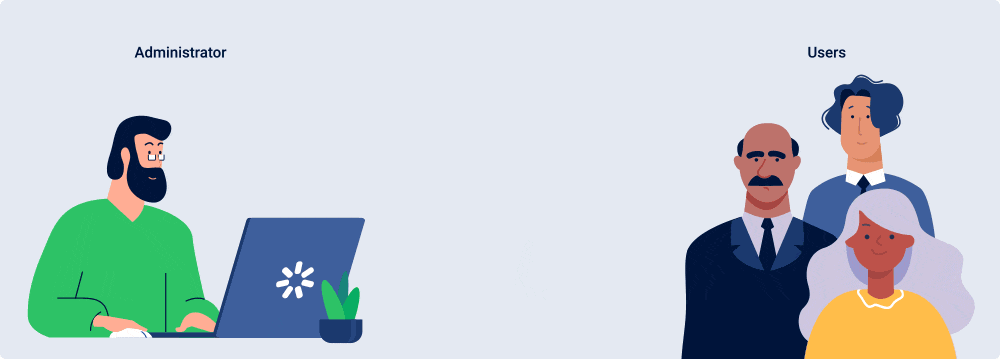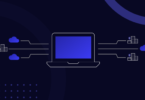The marketing funnel, sometimes referred to as the buy funnel, is a diagram that illustrates all the stages a visitor must take before making a purchase of a good or service.
However, why is it called a funnel? Getting customers to buy straight immediately is not the goal of marketing campaigns. Rather, they begin by obtaining leads, or prospective buyers who have shown interest in the company’s products or services.
Companies bring potential customers into the funnel by converting faceless strangers into leads. They then continue to market to these leads in an effort to persuade a number of them to make a purchase.
Naturally, only a small percentage of leads will really buy the goods. Some of them will give up the attempt before they reach the purchase stage as they move through the various phases of the buyer choice process. As a result, the throng disperses, and a funnel-like shape emerges as a visual depiction of this process.
The advantages of a marketing funnel
Given your newfound understanding of the marketing funnel, you may be debating whether or not to use it in your small company marketing plan. Make the following inquiry to yourself: Do I have an offering or something that I want others to buy from me?
Have I developed a winning go-to-market plan for my product? If the response is affirmative, you should without a doubt. Your success as a company depends not only on the value of your product but also on how it is advertised and presented to customers.
Your website’s design and color scheme, as well as the product packaging and brand marketing, all have a significant impact on how your customers move through your advertising funnel. This will also depend on how to build a click funnel which correlates with how you decide to advertise your website.
Enhanced brand recognition, enhanced brand loyalty, increased lifetime value of customers, and increased customer satisfaction are some particular brand and company KPIs that the marketing funnel may assist to improve. You can see any obstacles preventing a consumer from moving further in the funnel by having a thorough understanding of their path.
Based on this information, you can adjust your strategy to remove these obstacles and raise your conversion rate, whether it be through rendering your website easier to use, launching a campaign on social media, choosing to employ more specialized advertising, or running promotions through various channels. Because of this, funnel advertisements are so successful.
Any sort of marketing may use the marketing funnel. employing landing pages, internet marketing, and online advertising. from viral and influencer-based advertising to referral marketing for big audiences. The funnel is applicable and efficient across marketing platforms and techniques, including traditional, disruptive, and extremely smart marketing.
That’s a big part of why it affects marketing and business so much.
A marketing funnel’s stages
There isn’t universal agreement on the various stages of the marketing funnel, despite the fact that the general structure has mostly stayed constant for more than a century.
These phases consist of:
- Awareness
- Interest
- Consideration
- Intent
- Evaluation
- Purchase
Awareness
The first step is awareness, which is found at the top of any marketing funnel. Lead generation occurs at this stage, when clients are initially introduced to your brand.
Create focused marketing initiatives that are aimed at potential customers in order to raise awareness. Make careful segmenting the market to build campaigns that are appropriate for each sort of consumer.
Consider also composing press releases in this phase. Click here for more on press releases. In order to continue marketing to them, utilize lead capture forms to obtain their contact information (usually their email address).
As you’ll be utilizing the contact details to get in touch with them and direct them through the remainder of the marketing funnel, this is among the most crucial lead generating tactics.
Interest
Leads that express interest in your company advance to the interest stage of the funnel for advertising, which is properly named. As businesses begin to interact with all the contacts obtained during the previous step, lead generation transitions into lead nurturing at this point.
Email marketing is one of the best methods to generate interest. This enables you to contact prospects directly with pertinent, branded material and begin developing connections with them.
Consideration
The customer is assessing the many options accessible to them to meet their needs during the contemplation stage in the marketing funnel. They are already aware of your product and are already acquainted with your brand at this stage.
Now it’s up to you to persuade them that an item similar to yours is the greatest remedy for their issues. To do this, try sending targeted email campaigns with a call to action, for example trial periods and sales announcements, utilizing marketing automation software.
Offering customers educational content, including blog articles and webinars, that satisfies their needs while subtly pointing them in the direction of your product, is another well-known funnel marketing strategy.
Intent
Ever left anything in your online purchasing basket and a day or two later got a reminder email? That is how it feels to enter the intent stage.
Once potential consumers (sometimes referred to as prospects) show a clear desire to buy a product, including by getting in touch with a customer care agent, checking out a good’s demo, or putting anything to their shopping cart, they move on to the intent stage. Although it doesn’t necessarily imply that they will make a purchase straight immediately, it does show that they are prepared to do so.
In light of this, the purpose of the stage is the perfect opportunity to establish why your product or service is the best choice for the potential client. You must use persuasive marketing materials to convince them that your product is superior to those of your rivals.
Evaluation
Lead nurturing and sales come together at the marketing funnel’s assessment step. Here, the potential buyer is the one who will ultimately decide whether or not they want to purchase your goods.
During this phase, sales and marketing personnel must collaborate to persuade potential customers to make the purchase. The emphasis is maintained on promoting your company’s product as the best alternative, just as the prior stage.
Purchase
The purchase stage is referred to as the golden pot at the bottom of the advertising funnel. rainbow. Prospects make their final decision to purchase the item or service at this point.
Sales teams now take control of handling transactions. Utilize a variety of sales psychology strategies to understand your customer’s mindset and close the transaction.
B2B versus B2C marketing funnel
The number of participants and the degree of engagement between firms and customers are what distinguish the B2B or B2C marketing funnels from one another. Most of the time, B2C customers move independently and with very little direct contact from the company through the funnel.
Few clients actually engage with a person during outreach campaigns; instead, broad buying groups are targeted, or marketing automation techniques are used. Contrarily, B2B customers often consist of more than five individuals from several departments.
Sales reps create direct contact with B2B customers in the lower stages of the advertising funnel, whereas the top stages of the funnel follow a similar pattern to that of B2C consumers.
Funnel for nonlinear marketing
This new funnel strategy seeks to establish solid bonds with clients in order to keep them from switching to your rivals’ offerings while also encouraging them to become steadfast supporters of your business.
Although the steps of the bidirectional marketing funnel are not universally agreed upon, it is nevertheless a useful tool for analyzing customer behavior and maximizing your marketing efforts. Regardless of the promotional funnel model you use, the single most crucial thing is that your approach to advertising closely matches every phase of the buyer’s journey.












Leave a Comment
You must be logged in to post a comment.